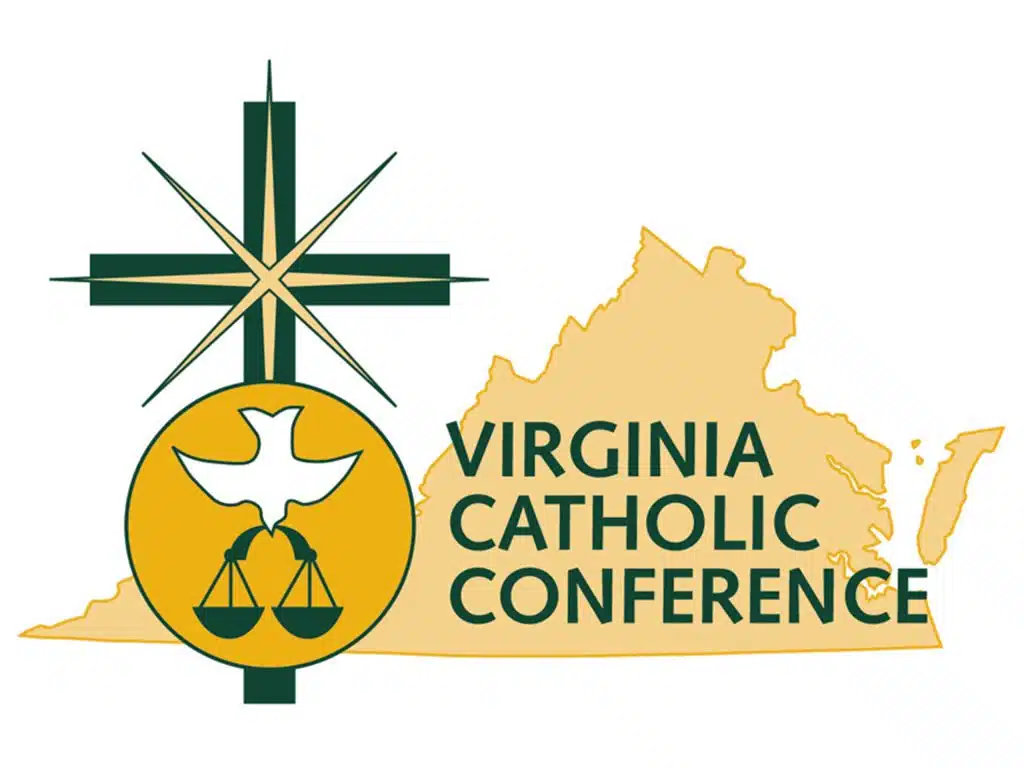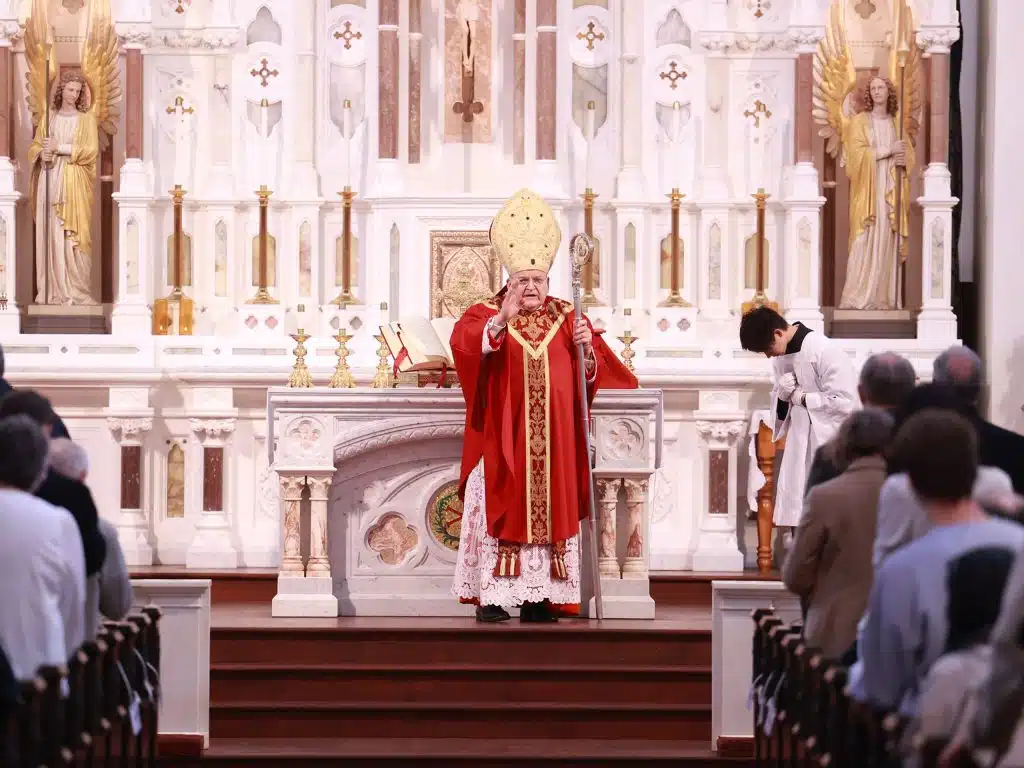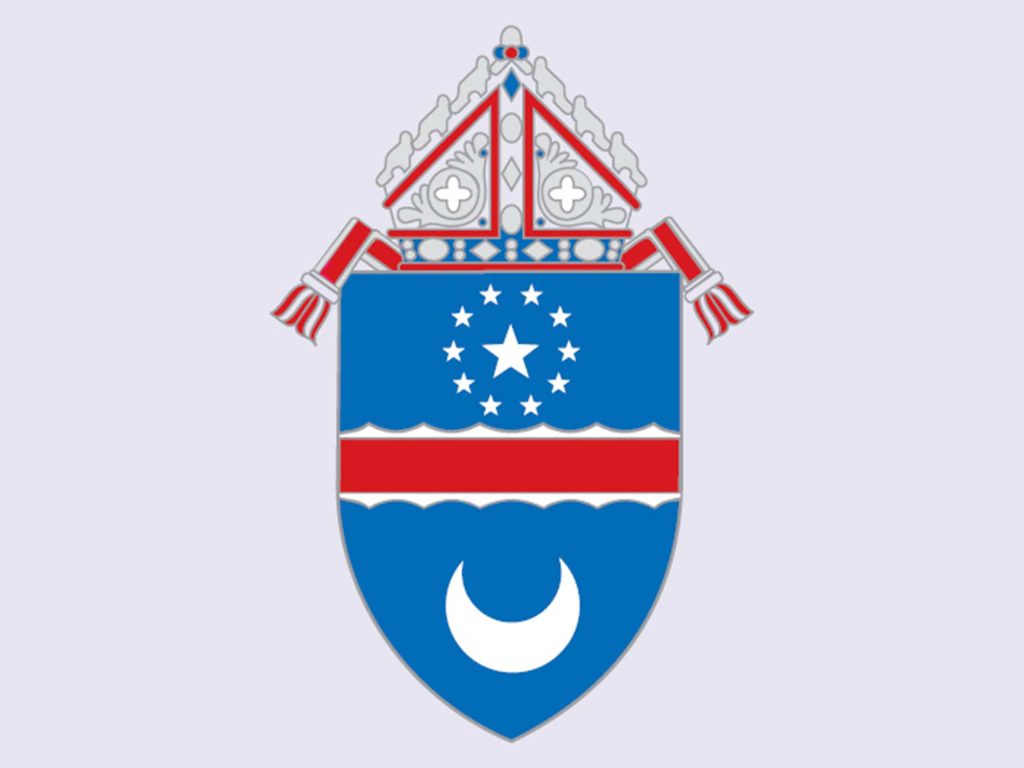If you drive on U.S. Route 15 in Maryland near the Pennsylvania border, you’ll see signs for Mount St. Mary’s University in Emmitsburg. You can see much of the campus and the seminary from the road. If you know where to look, you can also see the tower and statue of Mary at the entrance to the National Shrine Grotto of Our Lady of Lourdes on St. Mary’s Mountain.
The original grotto was established in 1805 by Father John DuBois, who, the story goes, saw a light on the mountain and walked to the spot. He made a cross from tree twigs and attached it to a tree to mark the holy spot. He built a church on the mountain that is now occupied by the tower and statue of Mary.
Three years later, Father DuBois founded the seminary on the ground below the early grotto.
In 1809, St. Elizabeth Ann Seton, founder of the Sisters of Charity, came to the grotto and lived for six weeks in the cabin that nearby parishioners built for Father DuBois until her residence near Emmitsburg was completed.
In 1812, Father Simon Bruté was named the first spiritual director of Mount St. Mary’s Seminary. He took a personal interest in the grotto, clearing trees, cleaning streams and making paths to it. He attached crosses made of twigs to trees on the path.
John Joseph Hughes came to the United States from Ireland in 1817, and was ordained a Catholic priest in 1826 and a bishop in 1838.
While studying at Mount St. Mary’s, he was employed to tend the garden near the grotto and lived in a cabin on the grotto grounds. That cabin has been restored and moved to a spot that has a view of the valley and the university.
Until 1958, the grotto was a place of meditation used by students and professors from the college and seminary. Grotto Director Father Hugh J. Phillips, known as the “Restorer of the Grotto,” paved the road from the bottom terrace to the grotto, made other improvements and opened the grotto to the public for the first time in 150 years.
The shrine now welcomes hundreds of thousands of visitors each year.
The road to the grotto is winding, but well-signed. There is a large parking lot at the main entrance. Limited handicapped parking is available, but the grotto staff will come to your car and drive you to parts of the shrine in a golf cart.
The first thing visitors see as they drive up to the parking lot is the Pangborn Memorial Campanile, a 95-foot tower topped with a gold-leafed bronze statue of the Blessed Mother. The tower is in front of the Richard and Mary Lee Miller Family Visitors Center, which includes exhibits and a gift shop. After exiting the visitors center you’ll see the Mother Teresa Garden and the Seton Walkway to Corpus Christi Lane and the outdoor Stations of the Cross.
At the end of Corpus Christi Lane is the Corpus Christi Chapel built in 1905 on the site of the original grotto created by Father DuBois. Beyond the chapel is the Grotto of Lourdes Cave, which is a replica of the Grotto of Lourdes in France.
At the grotto you can light a candle, sit, pray and mediate. Near the grotto cave is a statue of St. Bernadette Soubirous, the young girl from Lourdes who saw the Blessed Virgin 18 times in 1858.
On the return trip down Rosary Lane, you’ll pass a pool of water with a statue of Our Lady of the Esplanade in the center. Water flows from taps around the pool, and people can bring their own containers to collect the water that can be blessed by a grotto chaplain.
Then you’ll pass shrines to the 15 mysteries of the rosary, Padre Pio, Our Lady of LaVang, St. John Paul II, St. Faustina, the Holy Family and many more.
At the end of Rosary Lane is the Chapel of St. Mary on the Hill, or the Glass Chapel, with panoramic views of the valley.
It’s a good walk, and most places are wheelchair accessible except the steps to the chapel.
If you go
The National Shrine Grotto of Our Lady of Lourdes is located on U.S. Route 15 at Mount St. Mary’s University in Emmitsburg, Md. Follow the grotto signs.
For more information, go to msmary.edu/grotto or call 301/447-6122.


